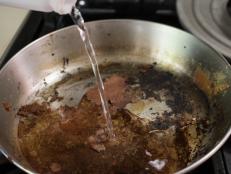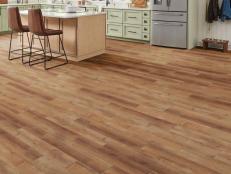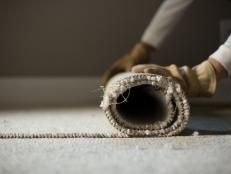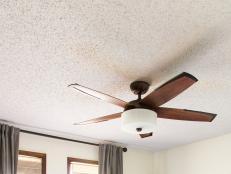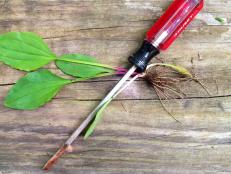How to Remove Wallpaper
Wallpaper removal is relatively simple with some elbow grease and a few household items.
Two decades ago, the wallpaper that's now haunting your master bath was all the rage. Today, though, it has to go. Lucky for you, we have some tips that make removing wallpaper a snap with a little effort.
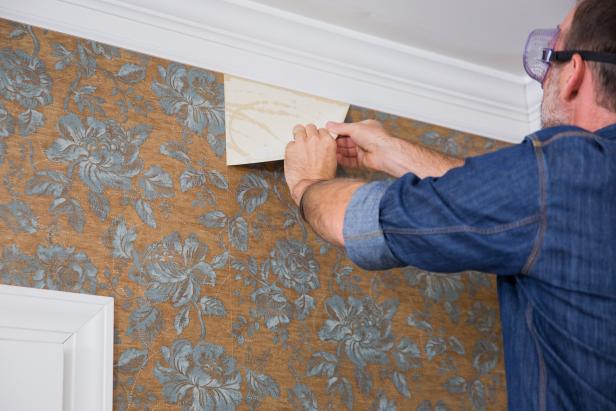
Jalynn Baker
Materials Needed
- 5” rigid putty knife
- wallpaper scoring tool
- pressure sprayer
- hot water from tap or electric kettle
- vinegar
- fabric softener
- screwdriver
- safety glasses
- painter’s plastic tarp
- painter’s tape
- garbage can with can liner
Step 1: Protect Floors and Electrical Outlets
Before beginning your wallpaper removal process, you’ll want to protect your floors since you’ll be spraying water onto the walls. Lay down a plastic painter’s tarp; you may want to secure the tarp to the floor using painter’s tape (Image 1). Your wall will probably have at least one electrical outlet; leave the outlet cover on and protect the entire area with painter’s tape (Image 2). Once the majority of the wallpaper is removed, you can come back to the outlet and remove the final pieces under the outlet cover.

Jalynn Baker
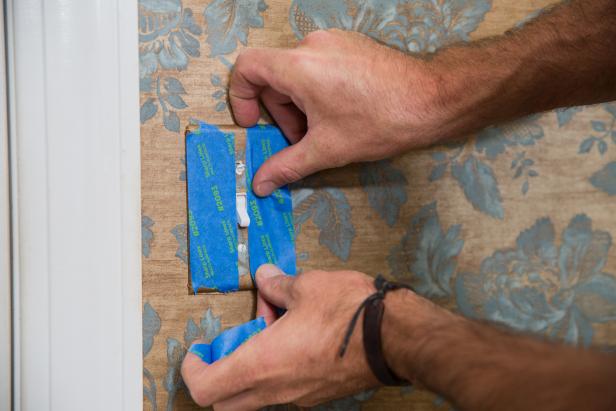
Jalynn Baker
Step 2: Pry Up Wallpaper
There are many different types of wallpaper, from vinyl coated to bamboo. For most, there will be an outer layer (vinyl, textile, bamboo or paper) and an adhesive inner layer (generally paper). Begin your wallpaper removal journey with a large, rigid putty knife or scraper. Simply find an edge to your wallpaper and pry it up using the scraper. If you can, peel the wallpaper down or begin to scrape it off the wall. If your wallpaper comes off in sheets, you’re one of the lucky ones.
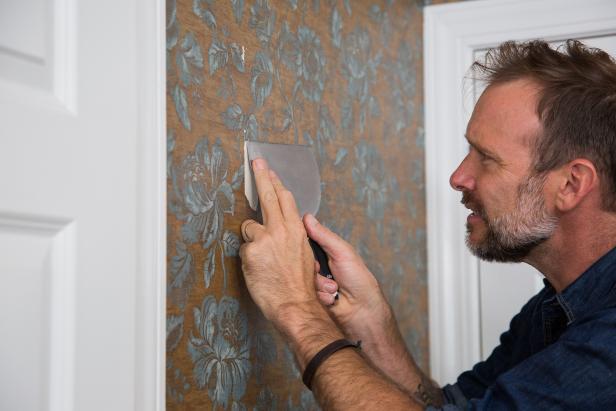
Jalynn Baker
Step 3: Score Wallpaper
For the majority of wallpaper removal projects, you’ll need to apply a hot water solution to the paper and adhesive backing in order to reactivate the adhesive and allow the paper to come off of the wall. Some types of wallpaper are more soluble than others; vinyl papers, like the ones used in bathrooms and kitchens, may even repel water. No matter what type you have, it’s a good idea to purchase an inexpensive wallpaper scoring tool (Image 1). This tool will slightly perforate the outer layer of wallpaper, allowing the hot water solution to penetrate to the adhesive and begin to loosen its hold on the wall. Use light pressure to run the scoring tool over the entire surface of the wall (Image 2). Don’t use too much pressure because the scoring tool can puncture through the paper and into the sheetrock or plaster, adding extra work of puttying the wall once you’re finished removing the paper. Buy a wallpaper scoring tool on Amazon.

Jalynn Baker
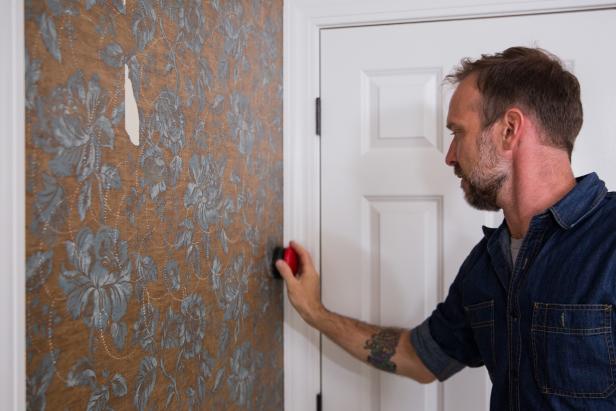
Jalynn Baker
Step 4: Mix Hot Water Solution
Once you’ve run the scoring tool over the entire wall, you’re ready to apply your hot water solution. There are two types of homemade wallpaper removal solutions that work best:
- Solution #1: 1/4 fabric softener to 3/4 hot water
- Solution #2: 1/3 household vinegar to 2/3 hot water
You may find that one works better on your type of wallpaper than the other. Hot water is the most important ingredient.
Mix hot water from your tap or kettle with either product in a household pressure sprayer. With your floors and electrical outlets covered and protected, you’re ready to wet the walls. Before you begin, put on safety goggles to protect your eyes as well. Have a large garbage can nearby so you can place large pieces of wallpaper directly into it. This will save time on cleanup later. Many small pieces will fall onto the floor. Your plastic painter’s tarp will catch these and make the final cleanup much easier.
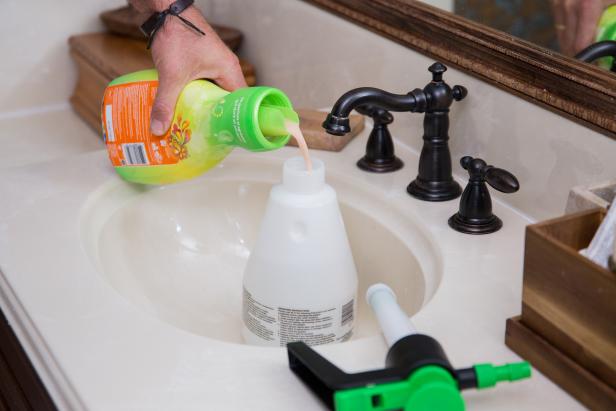
Jalynn Baker
Step 5: Apply Solution and Scrape Off Wallpaper
Use your pressure sprayer to apply the hot water solution to a four-foot-wide section of the wall (Image 1). Wait for two to three minutes to allow the solution to work its magic. Then, use your rigid scraper to pry a corner of the wet wallpaper and backing off of the wall (Image 2). Pull the wallpaper off in sheets and drop large pieces into the trash can (Image 3). Work the entire surface while it’s wet. You may find that some wallpaper or backing has dried and become more difficult to remove. Ignore the dried wallpaper and focus on removing the still wet pieces. Once the majority of the wet paper is removed, repeat this process. Spray, wait and scrape away the remaining bits of wallpaper.
Don’t forget those electrical outlets. Turn off the power to the outlet at the breaker box to protect yourself from electrical shock. Remove the painter’s tape from the outlet and use a screwdriver to remove the cover. Use your scraper to remove the wallpaper around the outlet. If necessary, wet the area with a rag soaked in the hot water solution, wait a few minutes and scrape the wallpaper off (Image 4).

Jalynn Baker
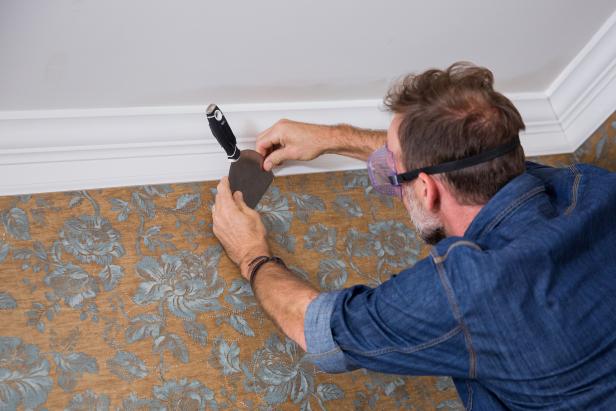
Jalynn Baker
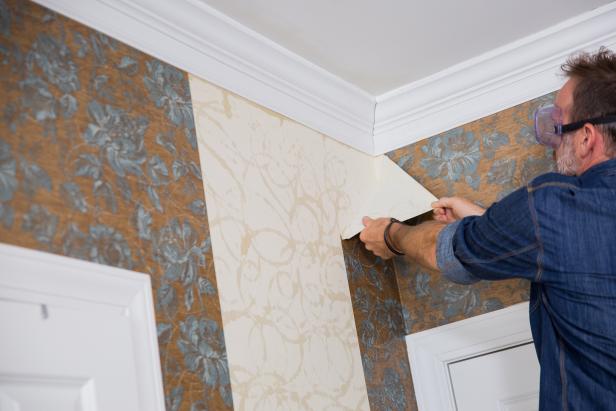
Jalynn Baker
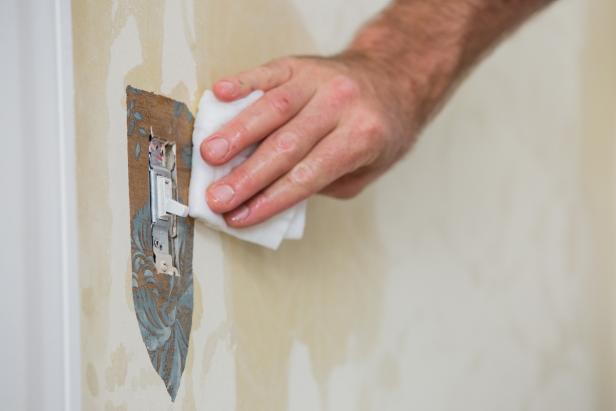
Jalynn Baker
Step 6: Remove Remaining Adhesive
Once you’ve removed all of the wallpaper, you may notice some adhesive left on the walls. Remove it by going over the walls one more time with the hot water solution and scraper. Cover the electrical outlet with painter's tape, spray a four-foot-wide section and work the scraper along the surface of the wall, removing the final bits of glue (Images 1 and 2). Use a clean, wet rag to wipe the wall down as you go (Image 3).
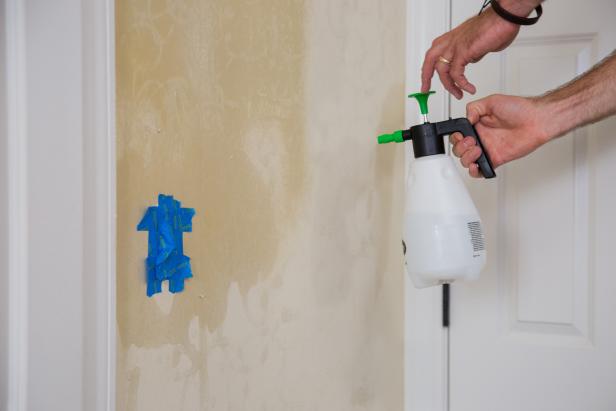
Jalynn Baker

Jalynn Baker
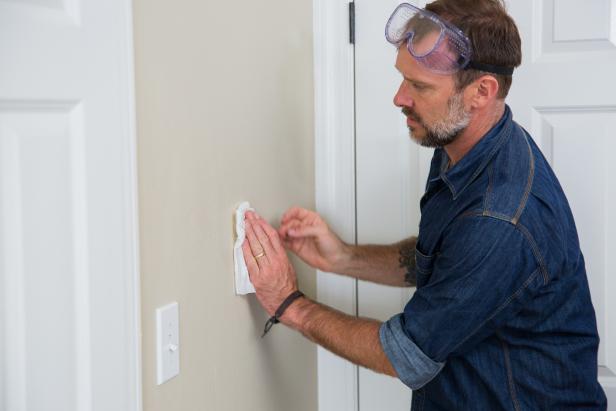
Jalynn Baker
You’ve done it! Out with the old and in with the new. Use an oil-based primer to prepare your wall for a fresh coat of paint.

Jalynn Baker
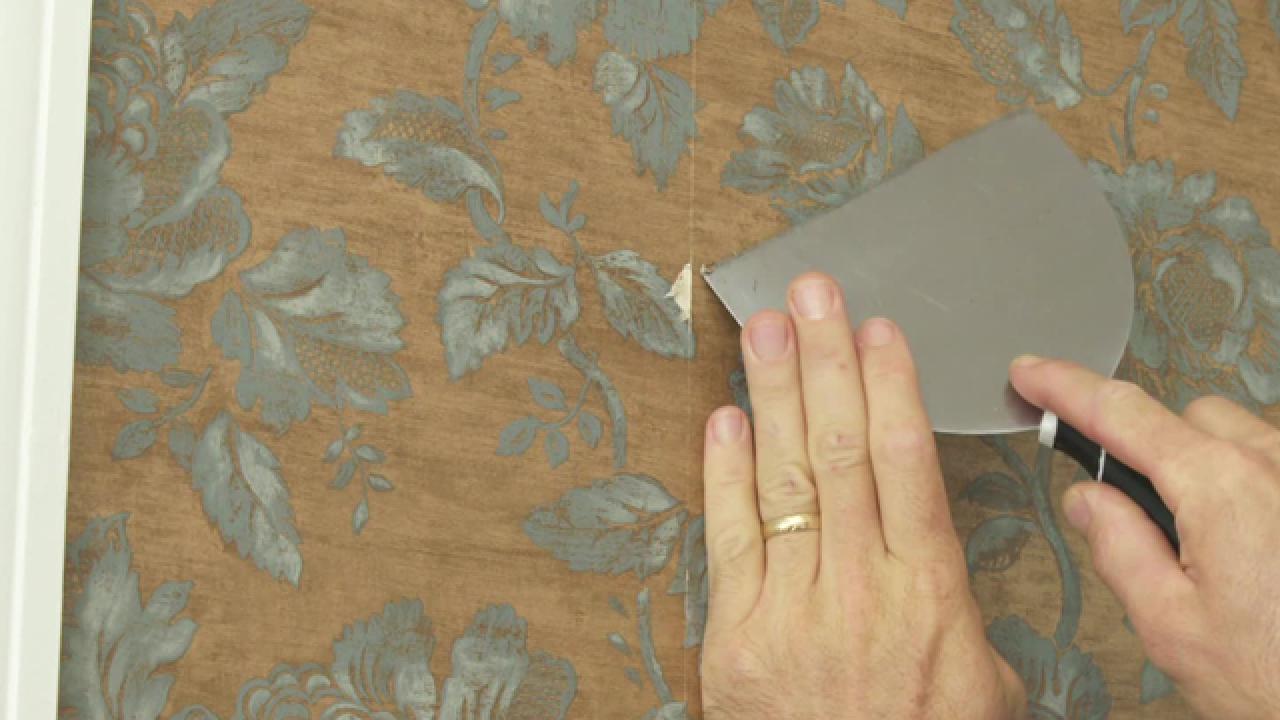

.-Battle-on-the-Beach-courtesy-of-HGTV.-.jpg.rend.hgtvcom.196.196.suffix/1714761529029.jpeg)





